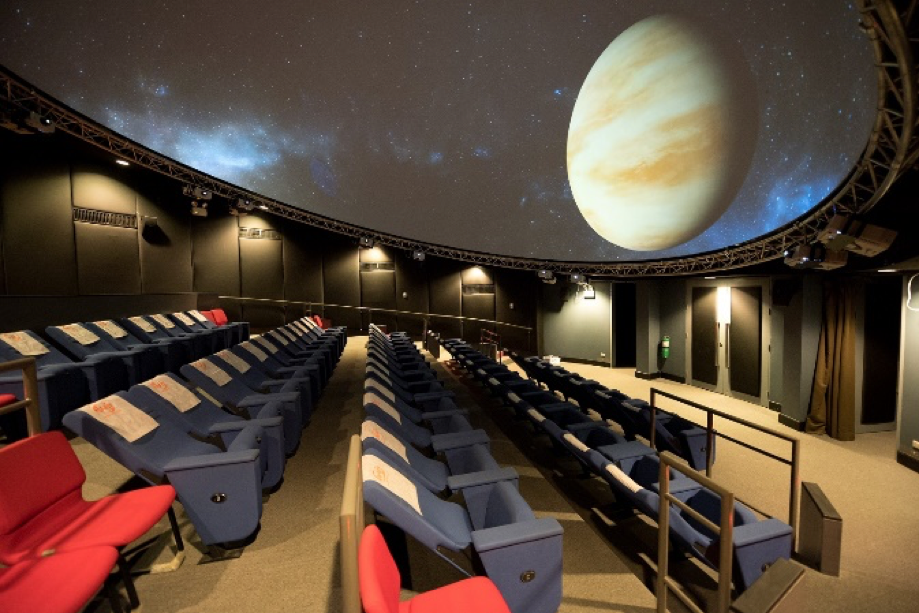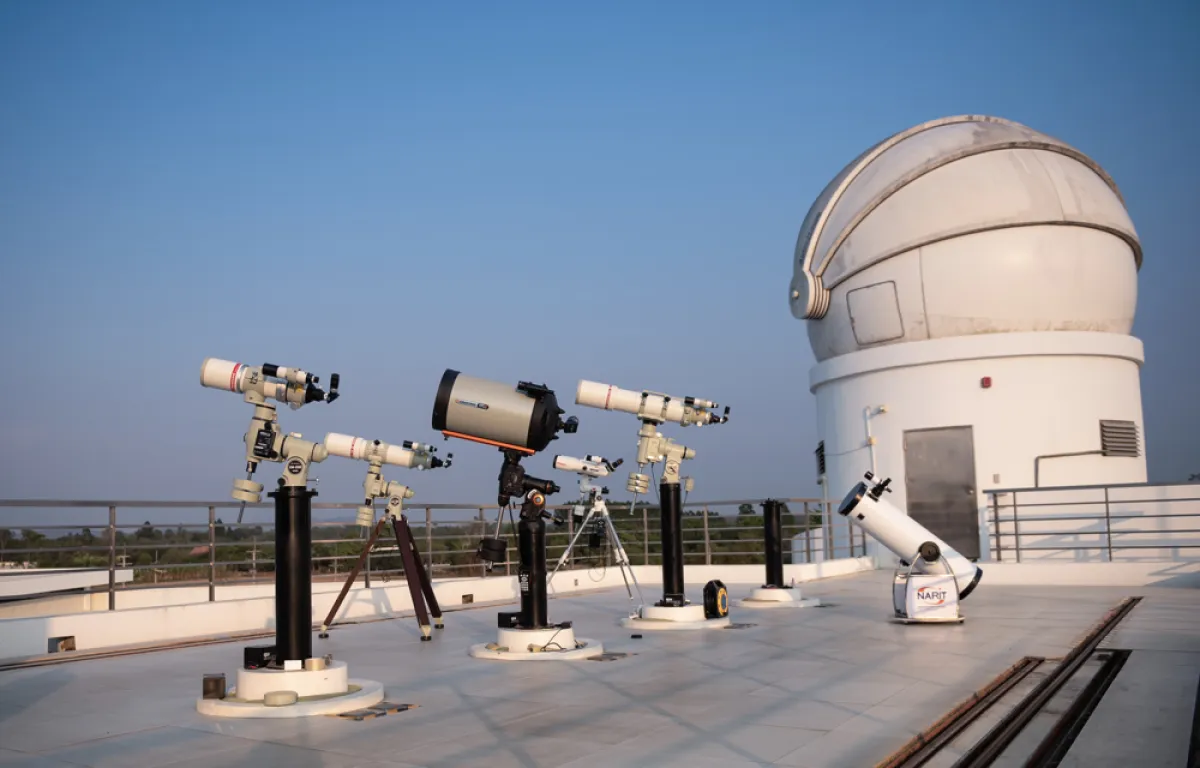3. Regional Observatory for the Public, Chachoengsao, or the Chachoengsao Regional Observatory. It is Thailand’s second full-scale regional observatory, located in Chachoengsao Province. Its main goal is to be an astronomy learning center for people and local educational institutions, to support academic services in astronomy to the community, and to support teaching and learning in educational institutions, as well as being an important academic tourism attraction of the region.
There are numerous interesting points within the Chachoengsao Regional Observatory:
- The star projection building, which features a 10-meter-diameter star projection dome, is outfitted with a full-dome digital star projection system with a resolution of 25 million pixels, allowing for star projection with the Stellarium stargazing program. It can project stars, constellations, imaginary constellations, the Sun, the Moon, galaxies, nebulae, star clusters, and planets, showing where they are in the sky on any day and at any time. It can also explain and educate audiences about the celestial sphere and celestial coordinate system, as well as show simulation films of the solar system, deep space objects, and other astronomical movies;
- The Astronomy Exhibition Building features a virtual astronomy learning set for visitors to use. It is divided into 14 exhibition zones, including Spectrum and Astronomical Discovery, Sun Observation, Light and Astronomy Photography, Lunar Exploration, and the Seasons, as well as the Earth’s Orbit around the Sun;
- A reflecting telescope with a diameter of 0.7 meters is housed in the observatory building. It is the primary telescope for astronomical research, is computer controlled, and includes an eyepiece through which visitors can view various celestial objects. It can also be linked to astronomical research equipment, such as spectrographs and other astronomical instruments;
- The Astronomy Learning Center building is known for the learning activities, training, lectures, astronomy camps, and astronomy exhibitions.
- The Planet Walk model was designed from the need to learn astronomy while walking around. Since the solar system is the foundation of astronomy, it is something that people are familiar with, so the solar system is integrated with various parts of the observatory to make the story of the area easier to understand, with the star projection building resembling the sun in the center of the sky. The solar system serves as the hub, around which those interested in astronomy are able to hear its story;
- Stonehenge, modeled as a circle, was used to watch the sun rise and set on the longest day of the summer solstice and the shortest day of the winter solstice. By observing the position of the rising sun from the center of Stonehenge, ancient humans were able to calculate the length of a year and predict how the seasons would change. This Stonehenge replica is one-third scale and is oriented in accordance with latitude 13.6°N, where the observatory is located;
- Replica Samrat Yantra: Samrat Yantra is an observatory that collects astronomical data and serves as a colossal sundial to tell the time. It is one of the monuments at the Yantarman Memorial in Jaipur, India, built in the 18th century.
There is also an astronomical painting wall, a stargazing ground for holding astronomical activities such as observing celestial objects or various astronomical phenomena, a botanical garden, an observatory, and a large camping ground where participants can set up a tent to stay overnight when participating in astronomy camp activities and observing astronomical phenomena.

Academic services focus on raising public awareness and communicating astronomy to all target groups, including children and youth, teachers, the general public, and amateur astronomers, in order to inspire, arouse interest, uplift, and create a society of science and technology learning. Each organized activity considers appropriate content and corresponds to the needs of the target audience, such as these examples:
- Provide services for transferring astronomy knowledge for students and the general public;
- Organize astronomy camps for students and educational institutions;
- Support astronomy research work for students and educational institutions;
- Organize training for astronomy teachers;
- Organize stargazing activities to observe celestial objects.
The Regional Observatory for the Public, Chachoengsao, is open Tuesday to Sunday, closed on Mondays. Those who are interested in visiting the full-dome digital planetarium, watching astronomy movies, and learning about the solar system and constellations will be to visit and see films on Tuesday-Friday, two rounds per day, 11:00 and 3:00; and Sunday, two rounds at 10:00 and 2:00 p.m., one hour per round, with a cost of 50 baht for the general public, 30 baht for students; young children, the elderly, monks, novices, and the disabled can enter for free.
On Saturday, there will be a stargazing activity (Narit Public Night), which is a chance to view stars and celestial objects through a variety of telescopes from 6:00 p.m. to 8:00 p.m., free of charge.
Those interested can ask for more information at
Regional Observatory for Public, Chachoengsao, 999 Moo 3, Wang Yen Subdistrict, Plaeng Yao District, Chachoengsao Province 24190.
Tel: +66 3858 9395 , +668 4088 2264

